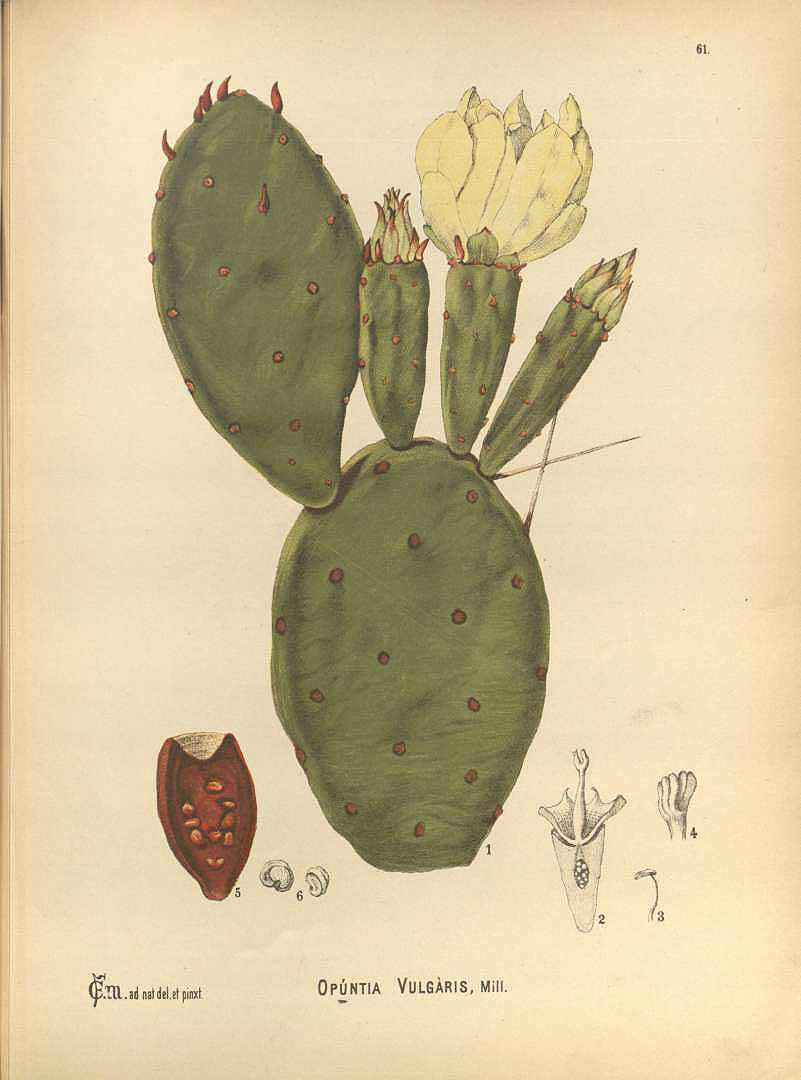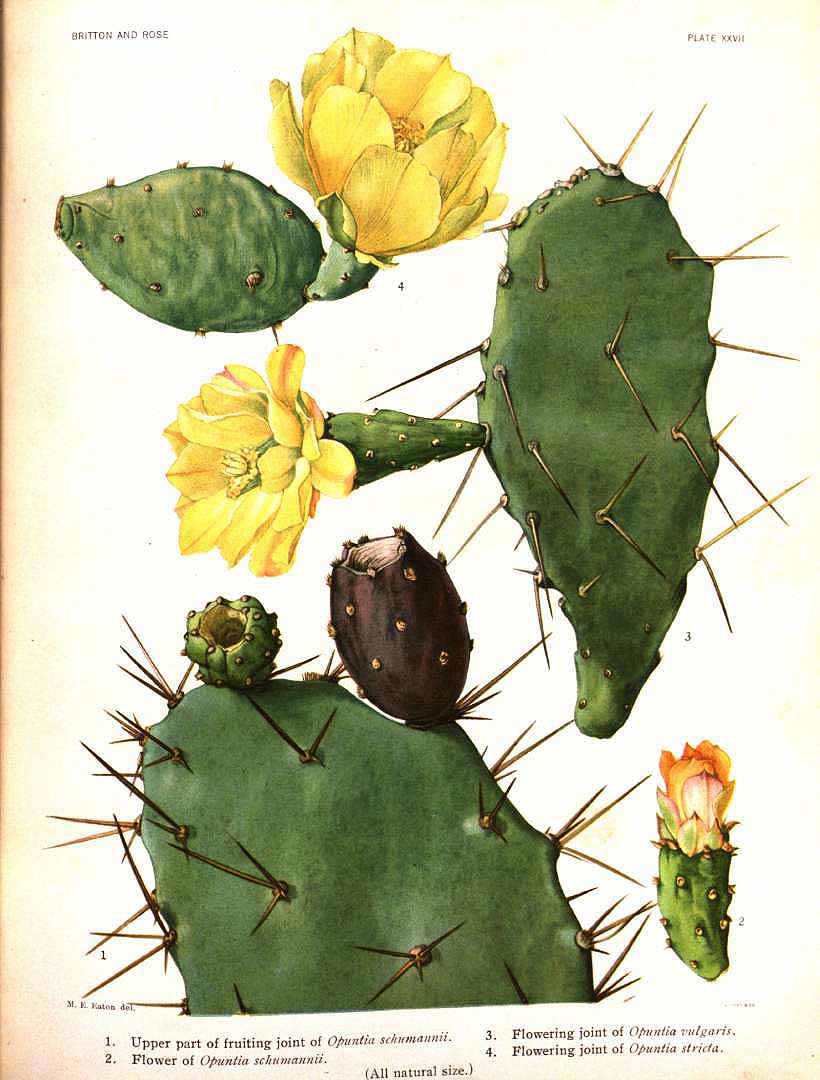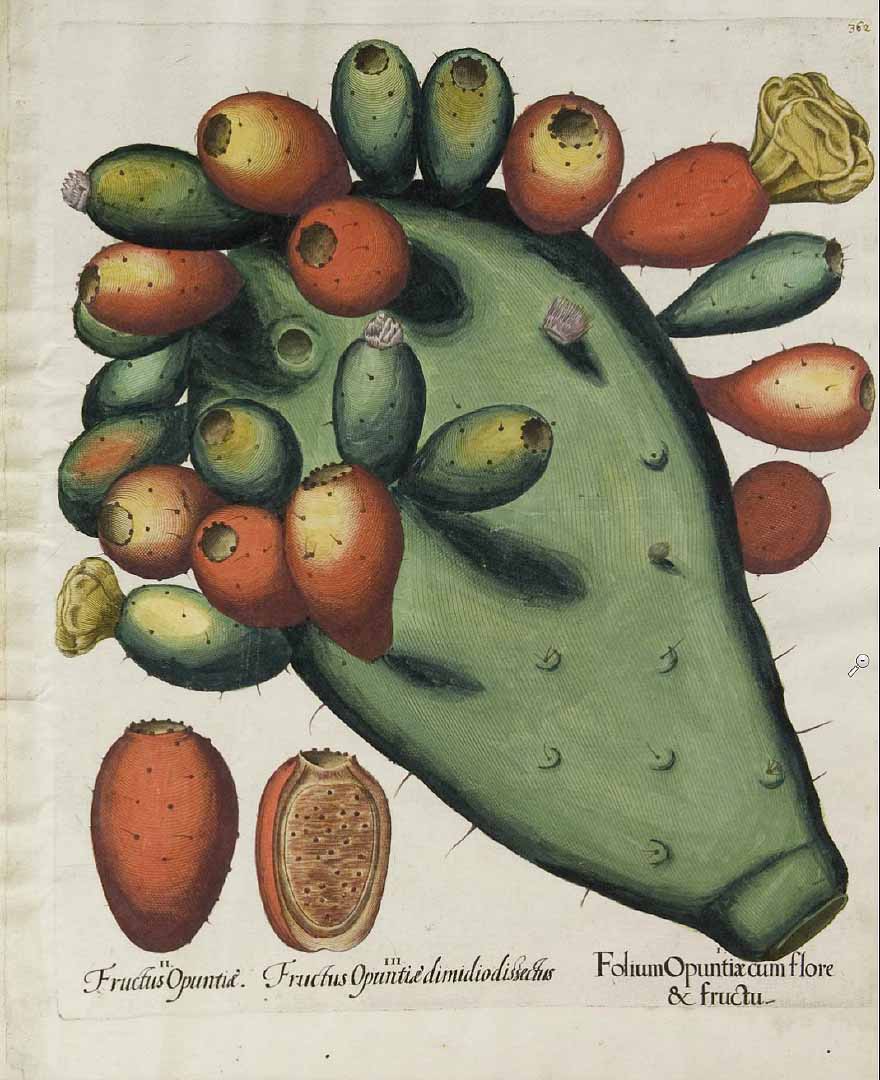! Nouveau site ici !
Vita > Plantae > Magnoliophyta > Magnoliopsida > Caryophyllales >
Cactaceae > Opuntia
Opuntia ficus-indica
(Figuier de barbarie)


 | *** - **
| *** - **
Vita > Plantae > Magnoliophyta > Magnoliopsida > Caryophyllales >
Cactaceae > Opuntia
Opuntia ficus-indica
(Figuier de barbarie)

Un arbre comme un cactus. Il atteint 2 à 5 m de haut. Il a de nombreuses branches. Il est étalé et vert bleuâtre. Il a des coussinets succulents. Les joints mesurent 20 à 40 cm de long sur 10 à 20 cm de l... (traduction automatique)
→suite
⬀
Le  donne accès au menu
donne accès au menu (c'est votre point de repère) 😊 ;
En dessous vous avez la classification, à partir de la vie (Vita, premier rang) jusqu'à la classe au dessus de la plante, dont vous trouvez ensuite le nom scientifique/botanique (latin) puis le nom commun (français), le cas échéant ;
C'est aussi un lien vers la fiche complète (tout comme la ✖, en bas à droite, et le +, en dessous de la description) ;
Vient alors l'illustration (ou ce qui la remplace, en attendant), la comestibilité :
Et en bas
⬂







